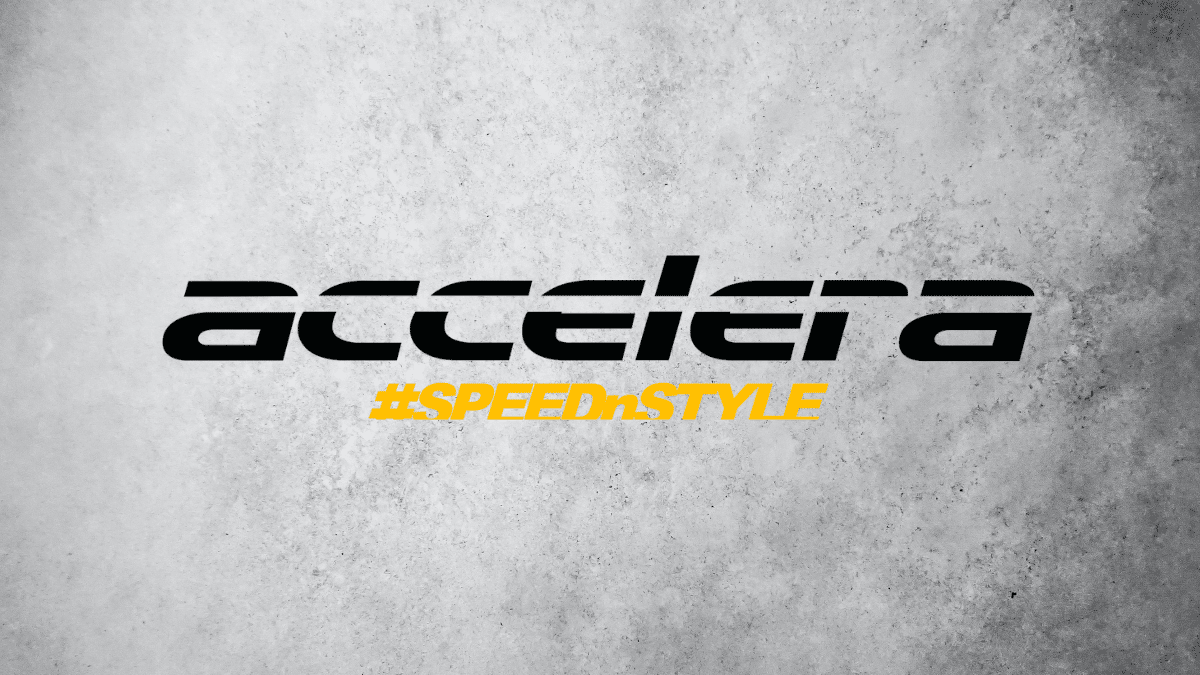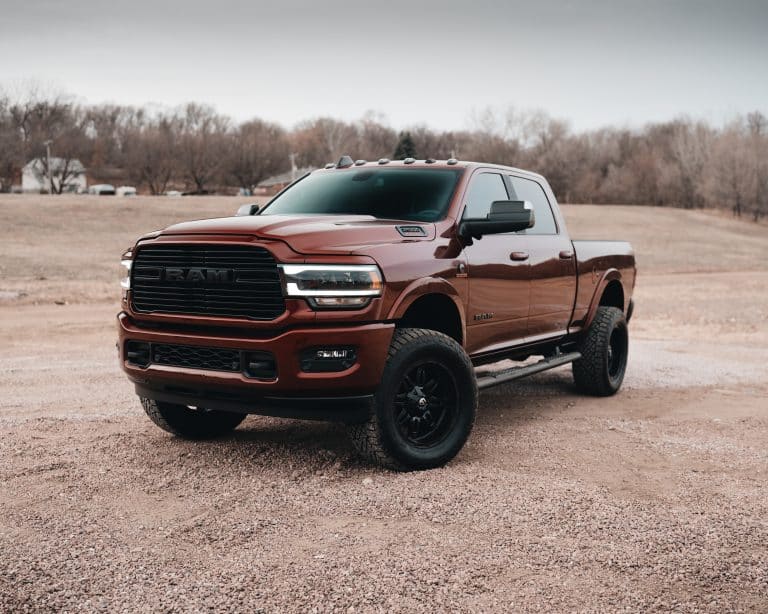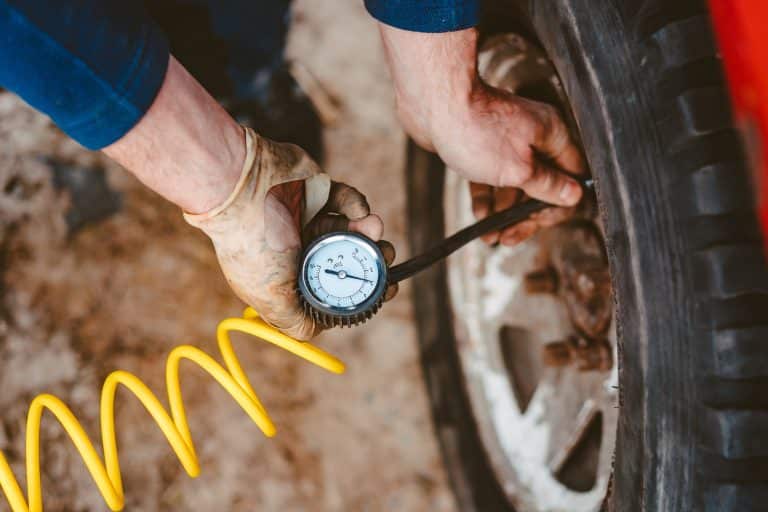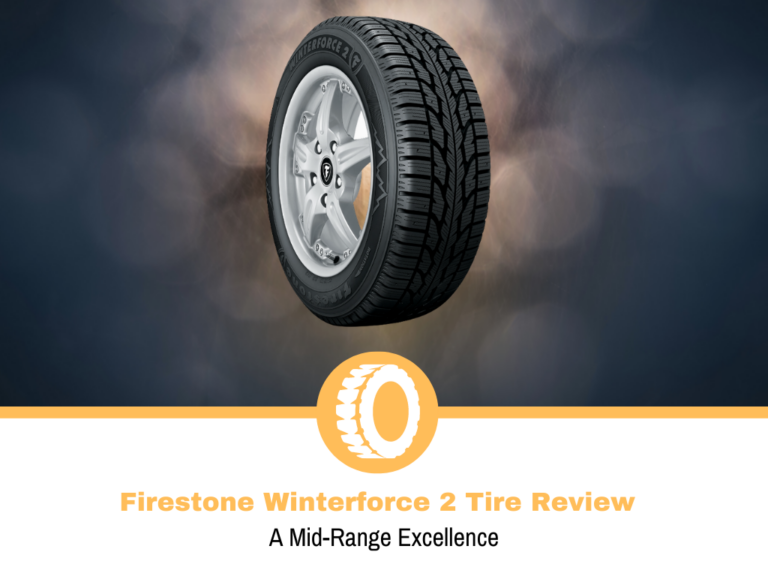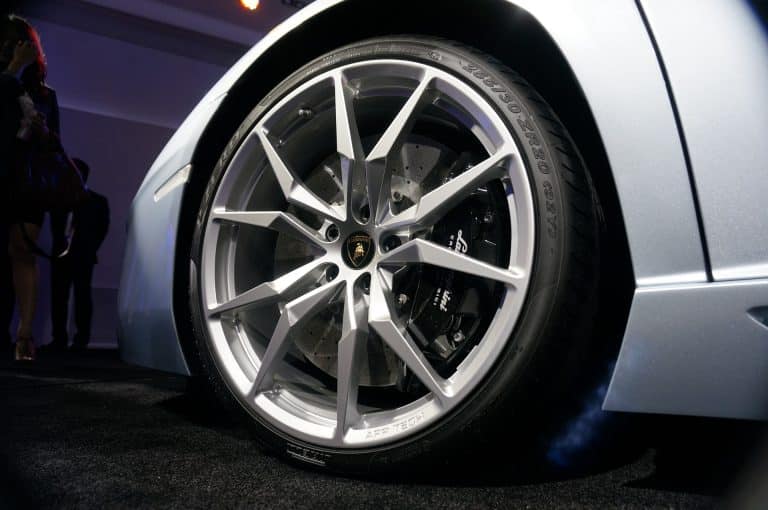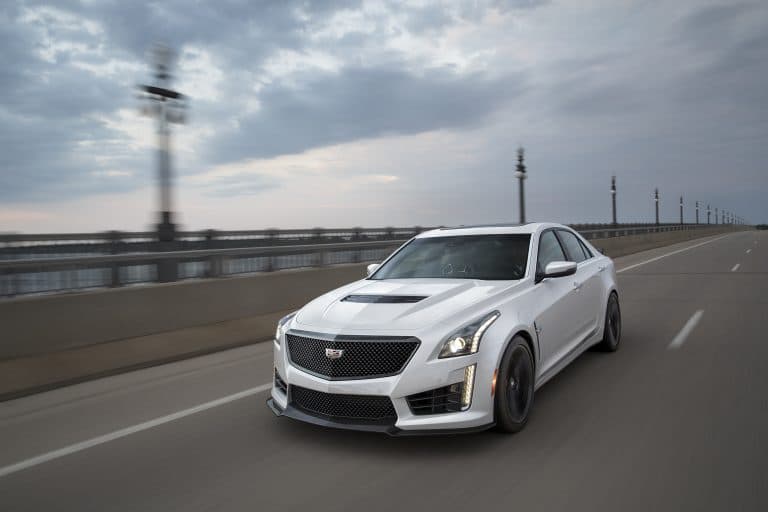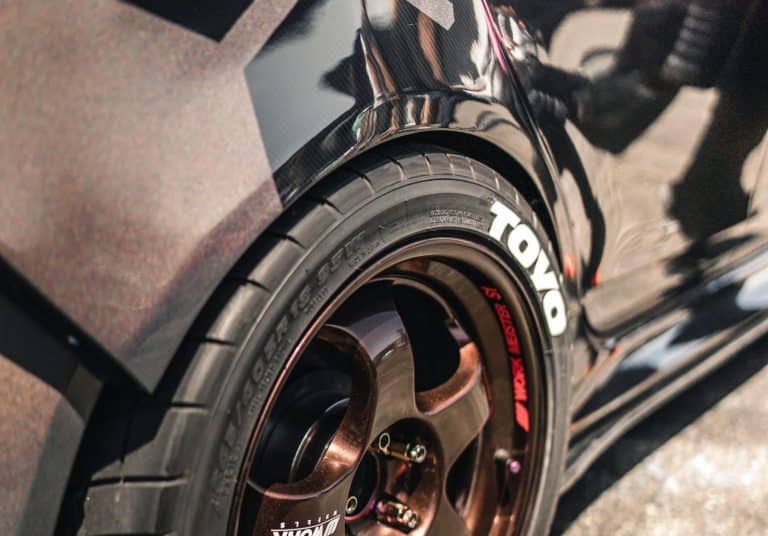Accelera Tires Review: Avoid if Possible
Car ownership is something that doesn’t cover just driving the car from point A to point B. Regular maintenance is essential because that’s the only way to keep your car running for as long as possible. Considering that tires are an important part, the same rule applies to them.
A set of tires may not be something you change very often, but at a certain point, it becomes inevitable. That inevitable activity can get expensive, so the market needs affordable options. Mid-range brands have been covering that aspect for a long time, but in recent decades, some options are far more affordable than that.
When going for something very affordable, you should be prepared for some drawbacks, and it’s important to balance it. Once you reach a point where tires are unsafe, the price becomes the least of your concerns.
In the world of affordable tires, there is a little-known brand called Accelera. It’s an Indonesian brand founded in 1996 under the ownership of Elangperdana. After that, the company sold Accelera to Zafco, which is a Taiwanese brand.
Regardless of the company’s nationality, today I’m here to see if Accelera makes good tires and if you should consider them.
Accelera Tires Review
Here are the best Accelera tires currently on the market:
#1. PHI
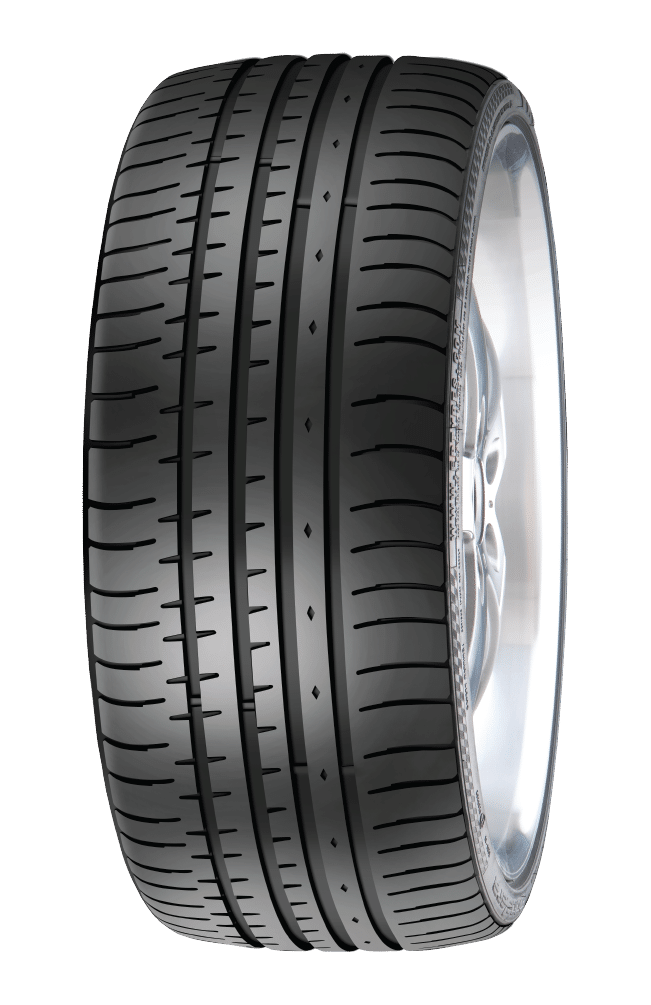
Don't know the correct size tire to purchase? Start here!
One of the most popular options from Accelera is the PHI. It’s a performance tire designed for passenger vehicles like hatchbacks, sedans, and coupes.
The PHI is an all-season model, so Accelera used a rubber compound that can handle a bit of cold. On the performance side of things, the design features sider shoulder blocks that should help with cornering stability. Down the middle of the tread, the tire has a continuous central rib designed to keep the tire stable at higher speeds. The lateral and circumferential grooves channel water away from the tire, meaning we should see solid aquaplaning resistance.
In the real world, the performance of the PHI is underwhelming for a performance tire. There is some grip and traction, but it’s still behind some of the mid-range options. It will get the job done for everyday driving as long as you don’t treat it like a UHP tire. Wet is where things start to get problematic. The tire’s traction on a damp road is far from the best. Even in less aggressive scenarios, you can get it to slip. This means you get longer braking distances, and the aquaplaning resistance is barely acceptable.
Looking at the tread pattern, you can guess how well this tire does in winter. Despite the all-season marketing, snow and ice is something you should avoid with this model. There is almost no traction on any kind of snow, making it more like a summer model than an all-season one.
One saving grace of this tire is the refinement levels. Considering how cheap it is, the PHI delivers surprisingly solid comfort levels. It’s not comparable to the premium models, but it softens large holes and eliminates part of the vibrations. The noise levels are also decently low. Yes, it’s louder than some of its competitors, but they’re also more expensive.
The handling is the aspect that I’m not a fan of. Due to its relatively soft nature, the PHI is a tire with a noticeable sidewall flex. On top of that, the feedback through the steering wheel is there, but it’s not as pronounced as it should be on a performance tire.
Pros
- Decent in dry conditions
- Solid comfort levels
- The noise levels aren’t the highest in this price range
Cons
- Almost non-existent winter performance
- Wet performance is way below average
#2. PHI R
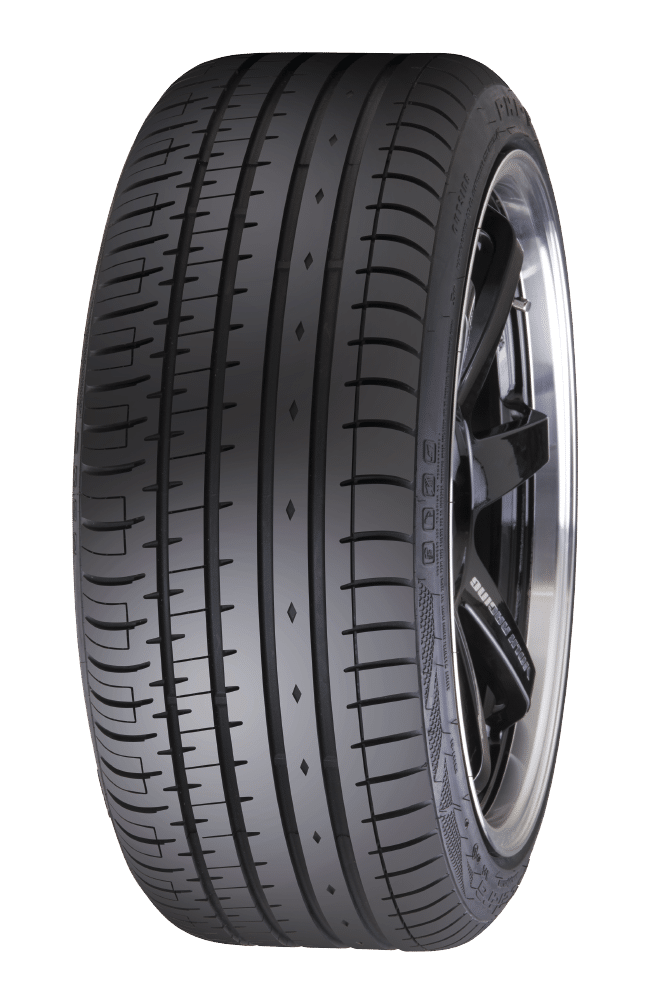
Don't know the correct size tire to purchase? Start here!
The PHI R is an upgrade over the PHI, covering the same vehicle types but at a higher price. Hopefully, this means that we should see some improvements.
Similar to its predecessor, the PHI R features an all-season rubber compound molded into an asymmetric tread pattern. The design is similar, but there are a bit more sipes, meaning we should see some improvements in wet conditions. In addition to that, the company designed them to help keep the noise down. Like before, the wide shoulder blocks should help stabilize and handle cornering.
The upgrade Accelera made shows a bit in dry conditions. With the PHI R, you have a bit more grip and traction, putting the tire closer to the performance range. I still wouldn’t be comfortable pushing it a lot, but it’s not horrible. On damp roads, the sipes do an acceptable job of delivering traction. There are some improvements, but I wouldn’t call it a good tire. The aquaplaning resistance is more or less similar, and I didn’t notice any massive difference.
I was hoping for some improvements on snow, but that’s not the case. Like the earlier model, the PHI R remains unusable on snow, whether packed or unpacked. It deals with colder temperatures a bit better, so use it only if the roads are clear.
Regarding refinement, the PHI R performs as well as the previous model. The comfort levels are solid, and the tire will smooth out some imperfections and soften some larger bumps. As for noise levels, there may be a slight difference from the previous model, making this a bit quieter, so it’s a bonus.
The PHI R remains similar to the original model in the handling department. The softer nature means there’s noticeable flex in the sidewall, and you won’t have the most responsive tire. You also won’t have a lot of feedback through the steering wheel.
Pros
- Slight improvements in dry and wet performance
- Solid refinement levels
- 45,000-mile treadwear warranty
Cons
- Winter performance remains unusable
- Despite the improvements, wet performance is still behind some of its rivals
#3. Eco Plush
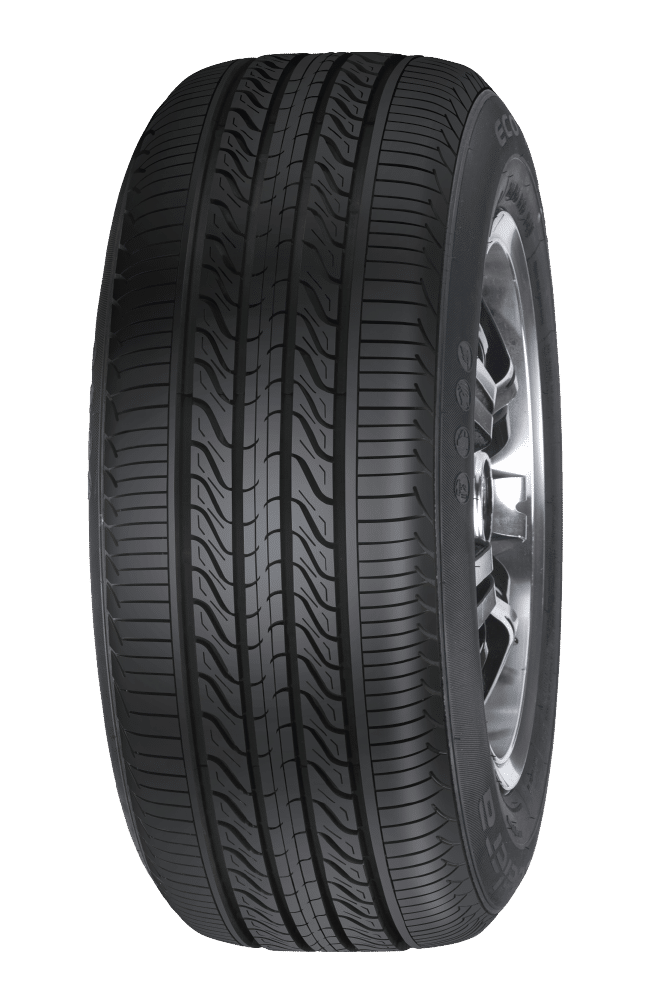
Don't know the correct size tire to purchase? Start here!
Moving away from the performance tires, we have the Eco Plush. As you can guess from the name, it’s a touring tire designed for everyday driving, and it comes in slightly smaller sizes.
Accelera advertises the Eco Plush as an all-season model and utilizes its all-season rubber compound to achieve that. The 4 circumferential grooves work together with the lateral ones to offer great water evaluation properties. As part of the design, the tire features diagonal grooves, and sipes should also help with traction on damp roads. The central ribs with the adaptive sipes are designed to help with stability and traction during acceleration.
As a daily driver, the Eco Plush isn’t the worst choice in the world. There’s an acceptable amount of performance as long as you’re not overly aggressive. To be fair, considering it comes in a smaller sizer, you probably won’t fit them on a Mustang. Wet performance is also acceptable as long as you’re not very aggressive. One slightly positive side is the aquaplaning resistance, which is solid, considering it’s a cheap tire.
The winter performance is limited, but you may use it in a pinch. There’s some traction on unpacked snow, but you’ll need to be careful and use it only in lighter conditions. Packed snow is a bit more problematic, so don’t push it too much. Since it’s an all-season tire, don’t expect it to perform well in deep snow or ice.
Since we’re talking about a touring tire, the refinement levels are solid. It deals with bumps relatively well and smooths out some of the imperfections. You won’t feel a jolt when you hit a larger hole, but you’ll notice some vibrations. The noise levels are on the lower end of the spectrum. There is a faint hum around town, which increases on the highway, but it’s not terrible.
As a touring tire, the handling is as you’d expect – acceptable. The responsiveness is a bit behind some of the best in class, but it’s not poor. You won’t have a lot of feedback from the Eco Plush, but most people won’t be pushing it hard, so it won’t be an issue.
Pros
- Decent traction on dry and wet roads
- Solid aquaplaning resistance
- The refinement levels are good
Cons
- Limited snow performance
- Comes in smaller sizes
#4. Epsilon
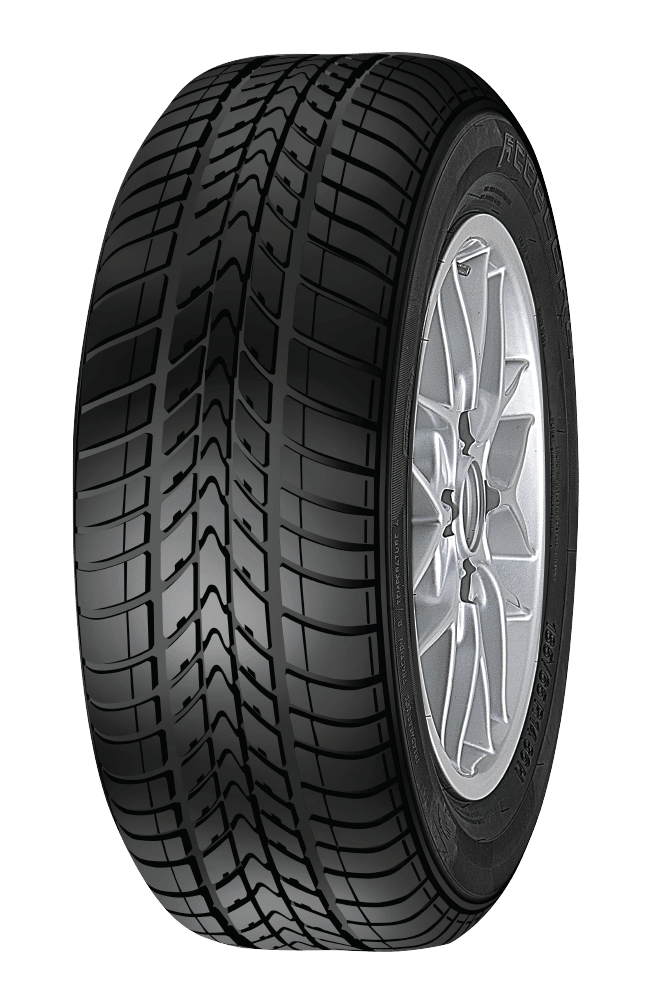
Don't know the correct size tire to purchase? Start here!
The last all-season passenger tire on this list is the Epsilon. It’s an all-season model for passenger cars with a slightly distinctive design.
Accelera made the Epsilon an all-season tire, meaning that it used a rubber compound that should deliver performance in lower temperatures. The directional pattern combined with the circumferential grooves aims to evacuate water, which should offer solid aquaplaning resistance. As part of the design, the tire features a triple dynamic central block to improve stability and keep the noise levels lower.
The Epsilon is sort of a performance tire, and you can say it delivers on that front a bit. In dry conditions, the grip and traction levels are solid for daily driving and acceptable for pushing it. The performance isn’t impressive, so you won’t be pushing it hard. Adequate is the right word here. Damp roads are where the tire disappoints a bit. It’s usable, but I would like to see more traction. On the other hand, the pattern does an excellent job at evacuating water, offering good aquaplaning resistance.
In winter conditions, the Epsilon is as usable as you can expect. The performance in lighter conditions is limited, and the most you’ll get out of it is on unpacked snow. On a packed one, the tire slips more, so you’ll need to drive carefully.
When it comes to refinement, the Epsilon doesn’t do a poor job at it. The comfort levels aren’t the worst, and the tire absorbs some of the bumps and vibrations. It can feel a bit bouncy at times, but it’s not a problem. The noise levels are also decent, and you won’t hear it too much. In a worst-case scenario, the tire will be audible over rougher surfaces.
The handling of the Epsilon is decent, but it feels more like a touring tire. It’s responsive enough for most people, but enthusiasts will find it slow, especially if they’ve driven some premium options. The feedback is there, but you’ll often feel like you need more than what the tire can offer.
Pros
- Good aquaplaning resistance
- Dry performance is pretty good
- Well-refined
Cons
- Needs a bit more traction on damp roads
- Average handling for a performance tire
#5. X-Grip
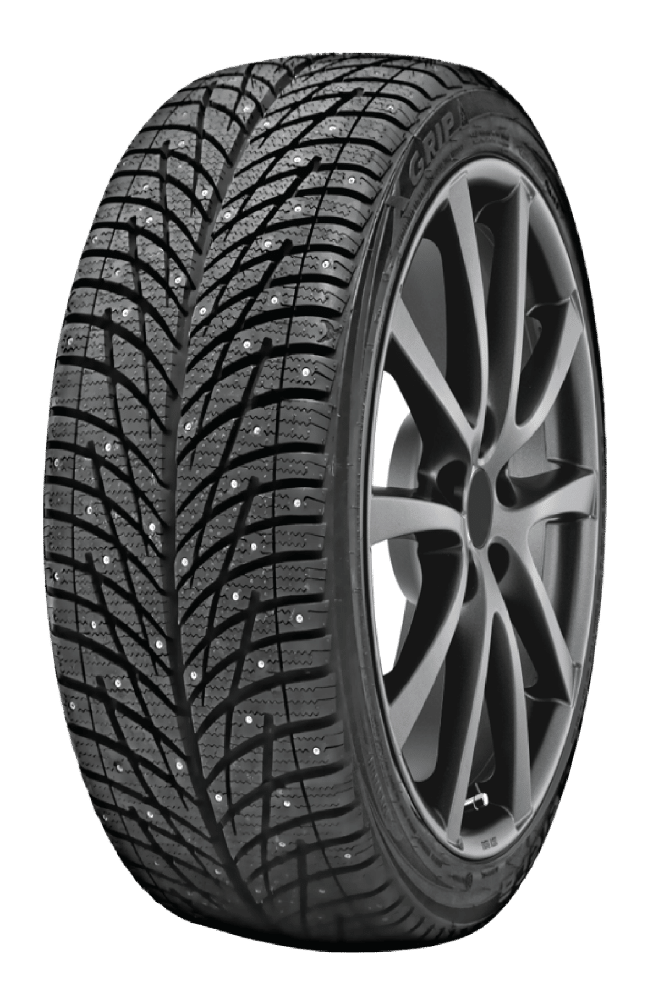
Don't know the correct size tire to purchase? Start here!
Before I dive into the larger vehicles, let’s talk about one of the winter tires from Accelera – the X-Grip. The main reason I include this one is that it’s studdable.
Considering that the X-Grip is a winter tire, Accelera used a rubber compound that can remain pliable at colder temperatures. The directional pattern with cross groves is designed to help the tire evacuate water, meaning we should see excellent aquaplaning resistance. For damp surfaces, the edge blocks work with the high-density sipes to help improve traction. Since it’s a studdable tire, the optimal number of stud holes means the tire should be good even on ice.
On a dry road, the X-Grip is a solid enough tire. It can deliver enough grip and traction to keep you on the road as long as you don’t push it too hard. As a daily driver, the tire offers decent performance that isn’t far behind some mid-range options. It’s the same with the braking distances, which are safe enough but still behind its rivals. Wet is where things aren’t so good. Yes, the sipes to their thing and offer some traction, but I feel like it needs more. The braking distances are solid enough, but I wouldn’t call them excellent. Like a few other tires from this brand, the aquaplaning resistance is solid.
As a winter tire, you’d expect it to perform well in these conditions, and it does in some of them. The X-Grip doesn’t have too many issues with traction on unpacked or packed snow. It’s not a mid-range or a premium tire, so don’t expect miracles here. One thing that may be an issue for some is that it struggles a bit in deeper snow. It’s not a massive issue, but it’s worth mentioning. With the studs, the tire offers improved performance, especially on packed snow and ice. The most surprising aspect is the braking distances, which are quite close to some mid-range options.
When it comes to refinement, the X-Grip isn’t the worst choice in the world. The comfort levels are decent, and the tire will handle bumps decently well and smooth out some of the imperfections. It doesn’t absorb potholes as well as the premium models, but it’s not harsh. The noise levels are surprisingly low for a winter tire. Around town, the hum isn’t terrible, and in most cases, the engine can drown it out. There is some noise at higher speeds, and in a worst-case scenario, you’ll hear it over rougher surfaces.
The X-Grip is a touring winter tire, so you can probably guess the handling isn’t the sportiest. The responsiveness is acceptable for most people who will drive around town. As for feedback, it’s very muted, and you won’t have a lot of it to tell you what the front tires are doing.
Pros
- Very good aquaplaning resistance
- Surprisingly quiet
- Solid dry performance
Cons
- It struggles a bit in deeper snow
- Traction on damp roads isn’t the best
#6. Iota ST68
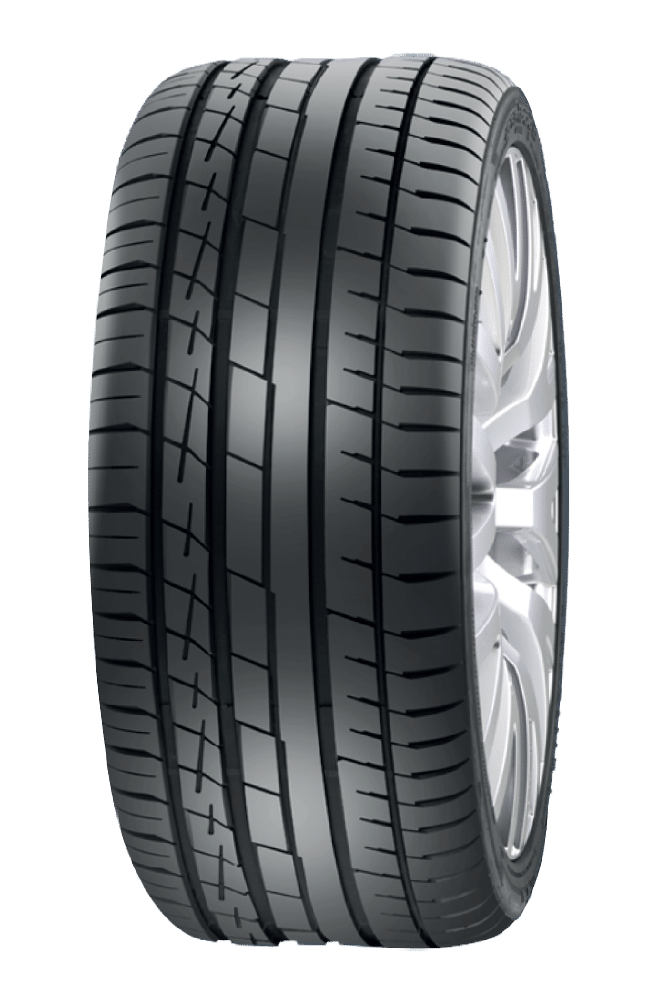
Don't know the correct size tire to purchase? Start here!
The first of the SUV and light truck models on this list is the Iota ST68. It’s designed for refinement and long tread life, so we’re looking at a touring option.
This tire uses an all-season compound, meaning we should see some usable performance in winter conditions. The Iota ST68 features 3 interlocking central blocks to deliver stability and great responsiveness. For harsh rain, the design has 4 circumferential grooves, which should channel water and provide good aquaplaning resistance. The exclamation sipes on the blocks should help with that and offer improved traction on damp roads.
When driving in dry conditions, the Iota ST68 is a tire that can deliver decent performance. There’s enough grip and traction for daily driving it, and even though the limits aren’t very high, it will be fine for most people. This comes backed with acceptable braking distances. Wet is where things change. The tire’s traction on damp roads isn’t the best. You can use it, but you’ll need to be mindful of the limitations. It will slip a bit more than you’d like, especially if you’re an aggressive driver. The braking distances are also longer than some of its competitors. On the flip side, the aquaplaning resistance is pretty good.
The Iota ST68 is an all-season tire but doesn’t perform as such. Even in lighter winter conditions, like shallow unpacked snow, the tire will struggle for traction. Things don’t improve too much on packed snow, where the traction is much more handicapped, and the braking distances are longer.
One thing the Iota ST68 has going in its favor is refinement. The comfort levels are very good, and the tire deals with bumps quite well. It smooths out road imperfections and absorbs bumps, coming very close to some of the more expensive rivals. The noise levels are also good, and the tire won’t be too loud in most cases. It can get a bit louder at highway speeds, but nothing too intrusive.
The Iota ST68 isn’t a performance tire, meaning the handling is adequate. Accelera worked on the pattern and tweaked the handling to be a bit more responsive, but it’s still not a UHP tire. The same goes for the feedback, the tire isn’t overly muted, but you won’t get a lot of it.
Pros
- Dry performance is good
- Solid aquaplaning resistance
- The refinement levels are decent
Cons
- Traction on damp roads is way below average
- Snow performance is very limited
#7. Omikron H/T
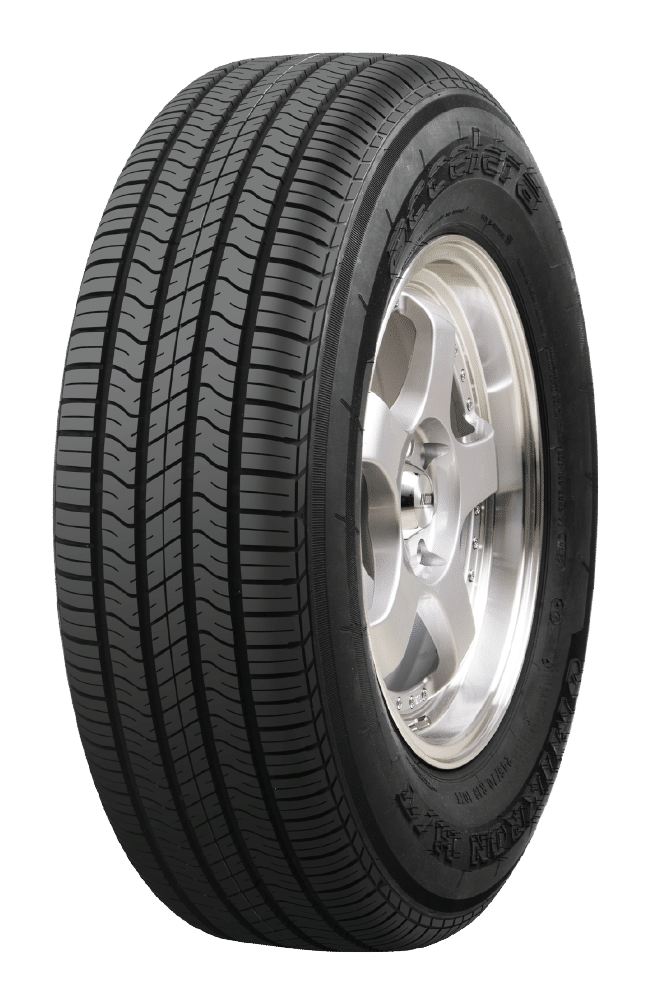
Don't know the correct size tire to purchase? Start here!
Next on the list is another model for SUVs and light trucks. The Omikron H/T is a highway all-season tire, so it’s designed for refinement and longevity.
To deliver performance in multiple weather conditions, the Omikron H/T is designed with an all-season rubber compound. The tread design features 4 wide circumferential grooves, which should provide great aquaplaning resistance. There are also lateral grooves and sipes, which should help with water evacuation and improve traction on damp roads. For highway stability, the tire’s central ribs feature interlocking blocks designed to keep them stable.
As a highway tire, the Omikron H/T delivers decent performance in dry conditions. It’s not a model you’d push a lot, but it will get the job done for daily driving. With that said, you should be mindful of the braking distances, as they are average for this class. It’s a similar story with wet performance. On damp roads, the tire will struggle a bit, but as long as you’re not pushing it, you’ll be fine. The tread design does a very good job evacuating water, so you’re looking at solid aquaplaning resistance.
Like most of the tires on this list, the winter performance isn’t all that impressive. The Omikron H/T will offer some usable traction in lighter conditions, but it will struggle a bit more than some of its rivals. Things don’t improve much on packed snow, as you’ll notice the traction control activating more than you’d want.
Highway tires are all about refinement, and the Omikron H/T delivers on that front. The comfort levels are solid for a tire of this class, and you won’t have to deal with a harsh ride. In some situations, it may feel spongy, but it’s livable. The noise levels are decent, and the tire’s noise won’t be the loudest thing you’ll hear.
Considering the category, the Omikron H/T shouldn’t be your first choice if you’re looking for a well-handling tire. The responsiveness will be acceptable for most people who want it as a daily driver, but enthusiasts will want more. It’s the same with the feedback, which I believe is a bit more muted than I’d like.
Pros
- Dry performance is pretty good
- Highway-like refinement levels
- Evacuates water quite well
Cons
- Snow performance isn’t on par with its rivals
- Traction on wet roads needs a bit of work
#8. Omikron AT
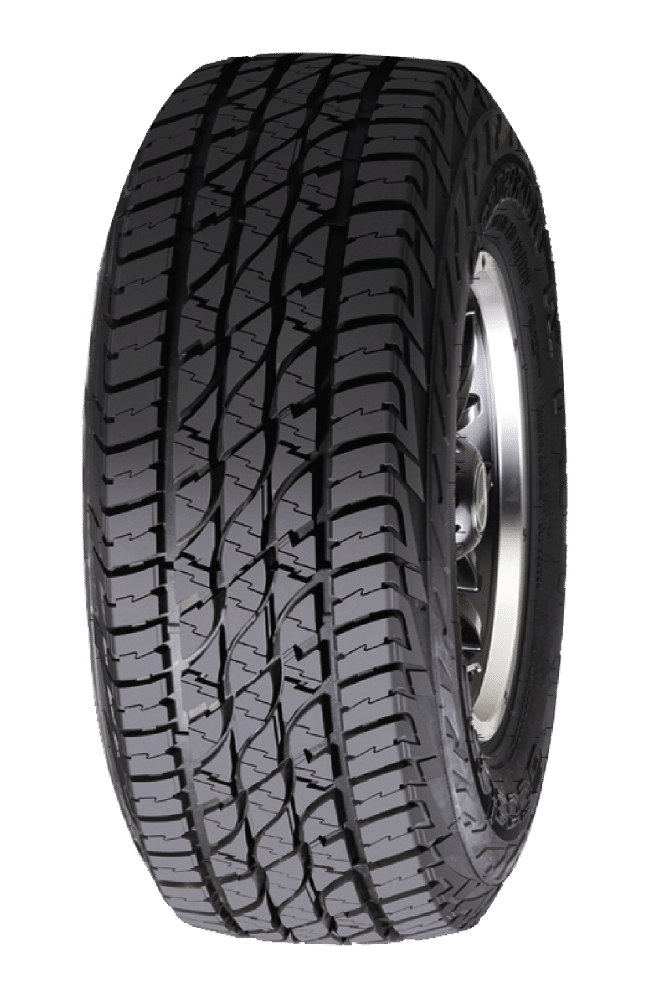
Don't know the correct size tire to purchase? Start here!
Now, we have an off-road capable model. The Omikron AT is the tire you’d get if you want a balanced combination of on and off-road performance.
Accelera designed the Omikron AT using an all-season rubber compound for the year-round performance. The interlocking central blocks are designed to help the tire with stability on the highway. For wet conditions, the tire features sipes that help it with traction and, combined with the grooves, evacuate water efficiently. The aggressive pattern is designed so that the tire can deliver solid off-road performance.
On the road, in dry conditions, the Omikron AT does a solid job in terms of grip and traction. It’s an all-terrain tire, so you won’t be pushing it hard. There’s enough stability for highway speeds, and as long as you’re not too aggressive in the corners, you won’t notice any understeer. In wet conditions, the performance remains decently good. On damp roads, the sipes help out a bit, and the traction isn’t too bad. The tread design with the wide grooves does a good job of channeling water, so you’re looking at good aquaplaning resistance.
Unlike most of the tires so far, with the Omikron AT, you’re looking at decent winter performance. The tire doesn’t struggle too much in lighter snow conditions, so it’s much more usable. You may notice a bit of slip on packed snow, but it’s not too terrible.
As an all-terrain model, you’ll be looking for some off-road performance, and the Omikron AT will deliver. The performance is solid on dirt roads, and the tire puts the power down. You can push it a bit, and it will be fine without doing something unpredictable. There’s also some mud performance on the table. For the most part, you’re looking at shallow patches where the tire can offer solid performance. There is a point where the mud is too deep, and you’ll get stuck, but most casual off-roaders won’t find themselves in those situations. Rock crawling isn’t something you should rely on. The tire does an acceptable job, barely, but only over smaller obstacles.
Back on the road, the refinement is surprisingly good, considering it’s an all-terrain tire. The comfort levels are solid, and the tire smooths out some of the bumps and larger holes. You can play around with the pressure a bit and get an even smoother ride. As for the noise levels, despite the aggressive pattern, it’s not the loudest all-terrain tire I’ve seen. Naturally, it’s not as quiet as a touring tire, so you will hear more of it, but not that much more.
The handling is okay-ish, as long as you’re aware of what kind of tire you’re getting. It’s responsive enough for commuting around town or on the highway, and if you push it a bit, you’ll notice the flex in the sidewall. The feedback is almost non-existent, which can be problematic for some, especially on gravel roads.
Pros
- Usable winter performance
- Decent grip and traction levels in dry and wet conditions
- Solid off-road performance
Cons
- Doesn’t do too well in sand
- It needs a bit more feedback
#9. MT-01
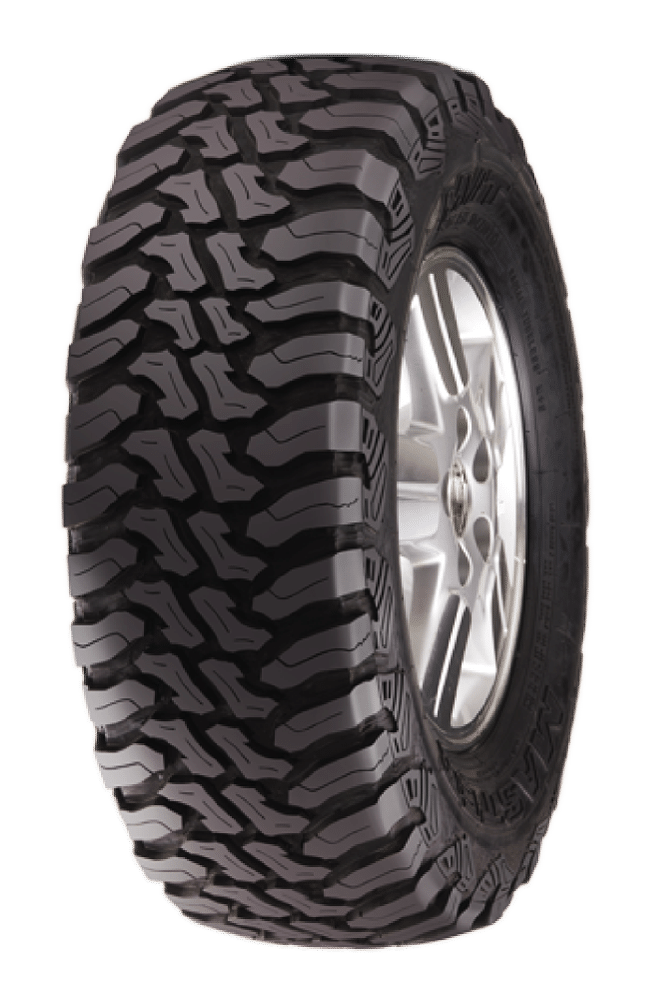
Don't know the correct size tire to purchase? Start here!
The last entry on this list is the tire designed specifically for off-roading. The MT-01 is a mud-terrain tire, meaning there should be many improvements in off-road conditions compared with the all-terrain model.
As you can guess, the MT-01 features an aggressive tread pattern, which should help it deliver performance in non-paved conditions. This means the tire gets a deep pattern, which should help in multiple conditions. To achieve this, Accelera designed the tread blocks with wide sipes aimed at off-road traction. The open scalloped hump tread should help with water draining and keep the tread clean from mud and debris.
On the road, the MT-01 is fine. If the roads are dry, the tire does an acceptable job, which is to be expected from a mud-terrain tire. There’s enough grip and traction for a safe drive if you don’t push it. The wet performance isn’t overly impressive. Even though the sipes are doing their thing, the traction is still weak. The good news here is that the deep tread evacuates water, so the aquaplaning resistance is excellent.
Another advantage of the aggressive pattern is the snow performance. In lighter conditions, the MT-01 doesn’t struggle with unpacked snow or slush like other Accelera tires. The sipes also help on packed snow, making this a much more usable option.
When it comes to off-road performance, the MT-01 delivers solid results. The tire offers plenty of dirt or gravel traction, meaning you get a lot for the price. I wouldn’t start comparing it with some mid-range options, but it’s not terrible. Mud also isn’t an issue, and the tire will handle even deeper patches. The tread pattern will remain relatively clean, so the performance will be consistent. For rock-crawling, it’s fine, but I feel like it needs more. Sure, you can air it down and go over a rock, but the pattern seems to be a limiting factor here because it’s not as aggressive as with some of its rivals.
Mud-terrain tires aren’t known for refinement, but the MT-01 doesn’t do too badly. Since the pattern isn’t as aggressive, the noise isn’t as loud as some of the other tires from this category. The comfort levels are acceptable, but the tire feels slightly harsh on certain roads. Tweaking the pressure may help a bit, but don’t expect miracles.
Considering it’s a mud-terrain tire, I don’t have high hopes for the handling. The MT-01 feels a bit slow to respond, which is to be expected. Also, the feedback isn’t too pronounced, so you won’t know what the front tires are doing.
Pros
- Very good performance in most off-roading scenarios
- Acceptable road manners
- Snow performance is solid
Cons
- It will struggle in the most extreme rock-crawling scenarios
- Wet traction is average
Accelera Tires Buying Guide
What is there to like about Accelera tires? What is it that distinguishes these tires from the chasing pack? Are there areas where Accelera tires could or should have done better? Any shortcomings that could potentially be deal-breakers? This section has all the answers.
Why Should You Buy Accelera Tires?
Here’s why Accelera tires should be on your short list of tire brands to buy next:
1. Wide range of options
Going for a specific brand means you’ll need to accept compromises. With most of the affordable options available, the biggest drawback is the lack of options for multiple vehicles. Accelera isn’t one of those because it has plenty of available models and comes in a wide range of sizes. As a result, this brand covers most of the vehicle types on the market.
2. Affordable
A trend with these brands is that they are affordable, which is their main selling point. Accelera offers its models at a fraction of the cost when compared with the premium models on the market. Keep in mind that there are some drawbacks to this, and most of them come in the form of limited performance.
3. Solid refinement levels
Whenever I talk about affordable tires, one of the drawbacks is in terms of refinement. The good news is that this doesn’t apply to Accelera. Even though the tires aren’t comparable with the premium options, they are decently refined.
Why Should You NOT Buy Accelera Tires?
Here’s why Accelera tires may not be a good choice for you:
1. Limited wet performance with some models
One of the several drawbacks of the low cost of Accelera tires is the limited performance in wet conditions. Some of the tires don’t deliver the necessary traction on damp roads, which can be problematic. If you’re aware of this, then you’ll need to be extra careful how you drive in these conditions.
2. The performance models aren’t too good
Accelera has a few performance-oriented models, but unfortunately, they don’t deliver on that promise. They may be fine from some less powerful vehicles, but they still feel more like touring tires than performance. This also means that powerful cars can easily overwhelm the tires and lose traction without too much effort.
Frequently Asked Questions
Here are some of the common queries people have about Accelera tires:
Who makes Accelera tires?
As a brand, Accelera has been in the hands of two companies, with the latest one being Zafco. Since Accelera doesn’t have its own manufacturing facilities, it relies on the ones from the parent company, which in this case is Zafco.
Where are Accelera tires made?
Zafco has manufacturing plants in Indonesia and Taiwan, and since it’s the parent company of Accelera, the tires are made there. With Accelera, the tires are made in Indonesia.
How long do Accelera tires last?
Longevity is a tricky answer to get because it depends on multiple factors. With some of the Accelera models offering a treadwear warranty, we can guess, but it still won’t be an exact answer. Based on the warranty, the tires should last decently long, considering they are cheap. With that said, they still won’t outlast the mid-range or premium models.
Is Accelera a good brand?
I would put Accelera in the barely acceptable brand. It doesn’t make the worst tires in the world, but they are far from the best. As a result, I cannot grade the brand as being good.
Are Accelera tires noisy?
There aren’t too many advantages to Accelera, but the noise level is one of them. Many of the tires from this brand are surprisingly quiet, which is why some people consider them.
Are Accelera tires good for snow?
If we put the winter option aside, the all-season models from Accelera have poor snow performance. You may find one or two with acceptable performance in lighter conditions, but that’s as much as you’ll get. The rest are practically useless in these conditions.
Conclusion
I can understand the need for affordable tires, which is the main reason why brands like Accelera exist. Affordable tires come with some drawbacks, which this brand has as well.
The limited performance in some conditions, combined with the questionable longevity, are two of the main things you should keep in mind when looking at models from this brand. To be fair, I’ve seen worse tires, so I cannot say that these are the absolute worst.
My recommendation for Accelera is to avoid it if possible. I know the prices are attractive, but you may find much better tires than these at a discount. The price will be similar, but the performance will be more dependable.
If you do decide to get tires from Accelera, you should be aware of the limitations and drawbacks.
